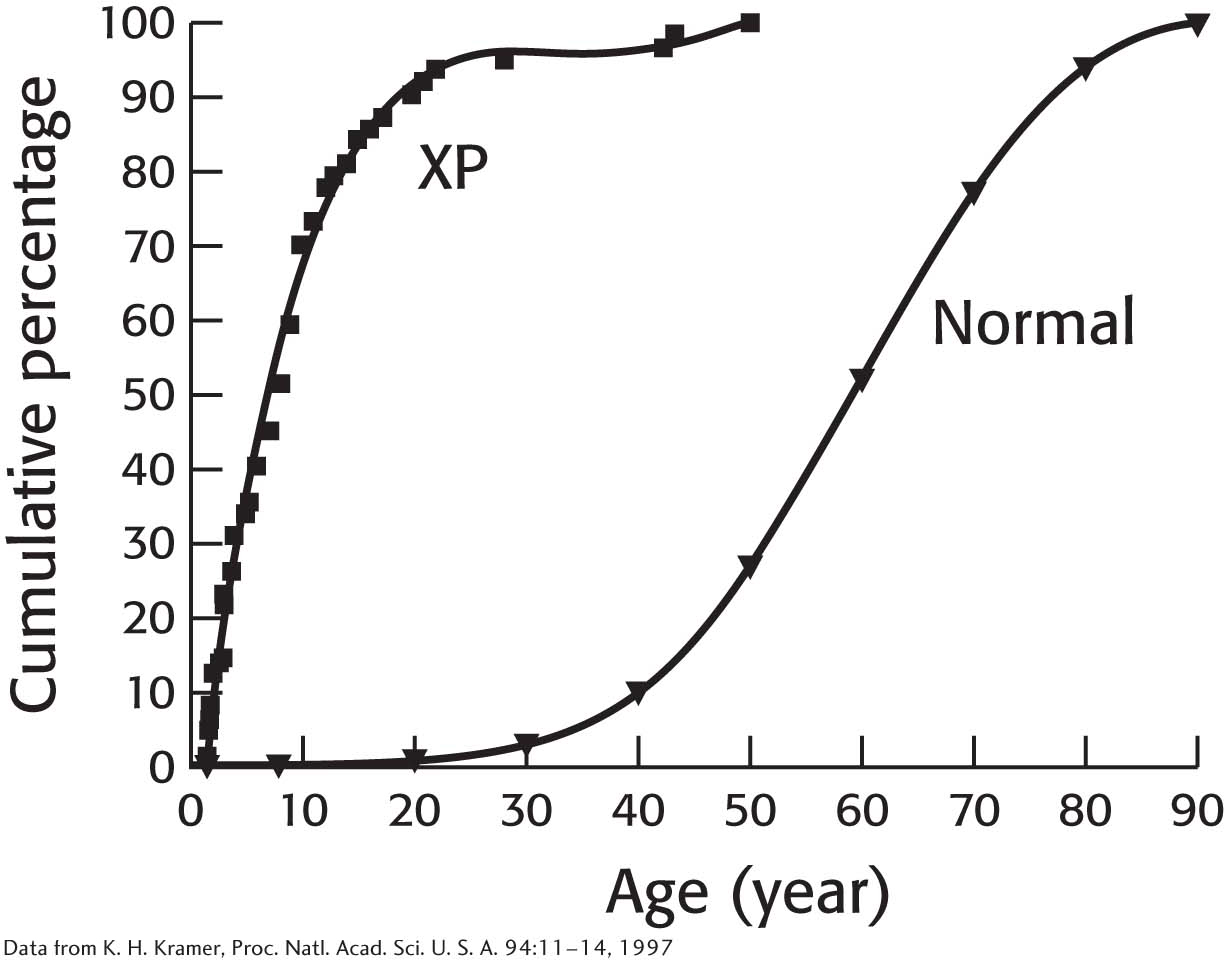PROBLEMS
Question 35.1
1. Mistakes were made. List some of the means by which mutations can be introduced into DNA.
Question 35.2
2. Molecular insults. List the factors discussed in this chapter that can cause DNA damage.
Question 35.3
3. As simple as 1,2,3. What are the steps required of all DNA-
Question 35.4
4. DNA repair services. List the repair systems responsible for maintaining the integrity of DNA. ✓ 5
Question 35.5
5. Sad, but true. Generations of children have been told by their mothers: “Get out of the house and play outside. Sunshine is good for you!” Why is that now sometimes considered questionable advice?
Question 35.6
6. Flipped out. Describe the process of base-
Question 35.7
7. T time. Explain the benefit of using thymine in DNA instead of uracil. ✓ 5
Question 35.8
8. A coincidence? I think not. Cytosine in eukaryotic DNA is frequently methylated in the 5 position as a means of transcription regulation. Eukaryotic cells also contain a specialized repair system that recognizes G–
Question 35.9
9. Corrections. Most of the time, the misincorporation of a nucleotide in the course of DNA synthesis in E. coli does not lead to mutated progeny. What is the mechanistic basis for this good fortune?
Question 35.10
10. No wonder you’re so tired. The spontaneous cleavage of adenine or guanine from DNA, a process called spontaneous depurination, is a common form of DNA damage in mammalian cells. The rate of spontaneous depurination is estimated to be 3 × 10−9 per purine per minute. This damage must be repaired. A diploid human cell has 6 × 109 bp. How many spontaneous depurinations must be repaired per cell per day? ✓ 5
Question 35.11
11. Induced spectrum. DNA photolyases convert the energy of light in the near-
Question 35.12
12. Like Lewis and Clark. Match each term with its description.
Trinucleotide repeat Mutagen Mismatch repair Direct repair Base- Nucleotide- Tumor- RAD51 Holliday junction Recombination | Requires MutS, MutL, and MutH DNA repair without the removal of any fragments of DNA An ATPase that binds single- Requires glycosylase activity Recombination intermediate Expansion of it causes Huntington disease Repair mechanism encoded by the uvrABC gene in E. coli Exchange of genetic information Chemical agents that alter DNA Often a gene for DNA repair |
Data Interpretation and Challenge Problems
Question 35.13
13. Ames test. The adjoining illustration shows four Petri plates used for the Ames test. A piece of filter paper (white circle in the center of each plate) was soaked in one of four preparations and then placed on a Petri plate.
The four preparations contained (A) purified water (control), (B) a known mutagen, (C) a chemical whose mutagenicity is under investigation, and (D) the same chemical after treatment with liver homogenate. The number of revertants, visible as colonies on the Petri plates, was determined in each case.
(a) What was the purpose of the control plate, which was exposed only to water?
(b) Why was it wise to use a known mutagen in the experimental system?
(c) How would you interpret the results obtained with the experimental compound?
(d) What liver components are likely responsible for the effects observed in preparation D?
Question 35.14
14. Here comes the sun, and I say, it’s not alright. Skin cancer is the most common cancer in Caucasians, accounting for nearly half of all cancers in the United States per year. More than 2 million people are expected to develop nonmelanoma skin cancer this year in the United States. Fortunately, this skin cancer is readily treated. Sun exposure is the major environmental agent implicated in the induction of nonmelanoma skin cancer. The adjoining graph shows the cumulative percentage of patients with nonmelanoma skin cancer plotted against the age of onset of skin cancers in normal and xeroderma pigmentosum (XP) skin-
(a) Of the two groups of patients, which group is more susceptible to skin cancer?
(b) Explain your answer to part a.
(c) Hypothesize why it takes approximately six decades for skin cancer to develop in normal people.
Selected Readings for this chapter can be found online at www.whfreeman.com/